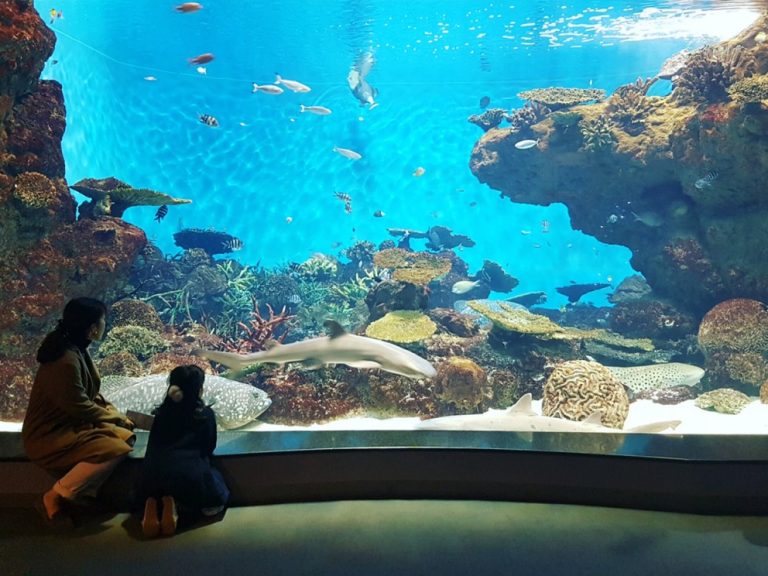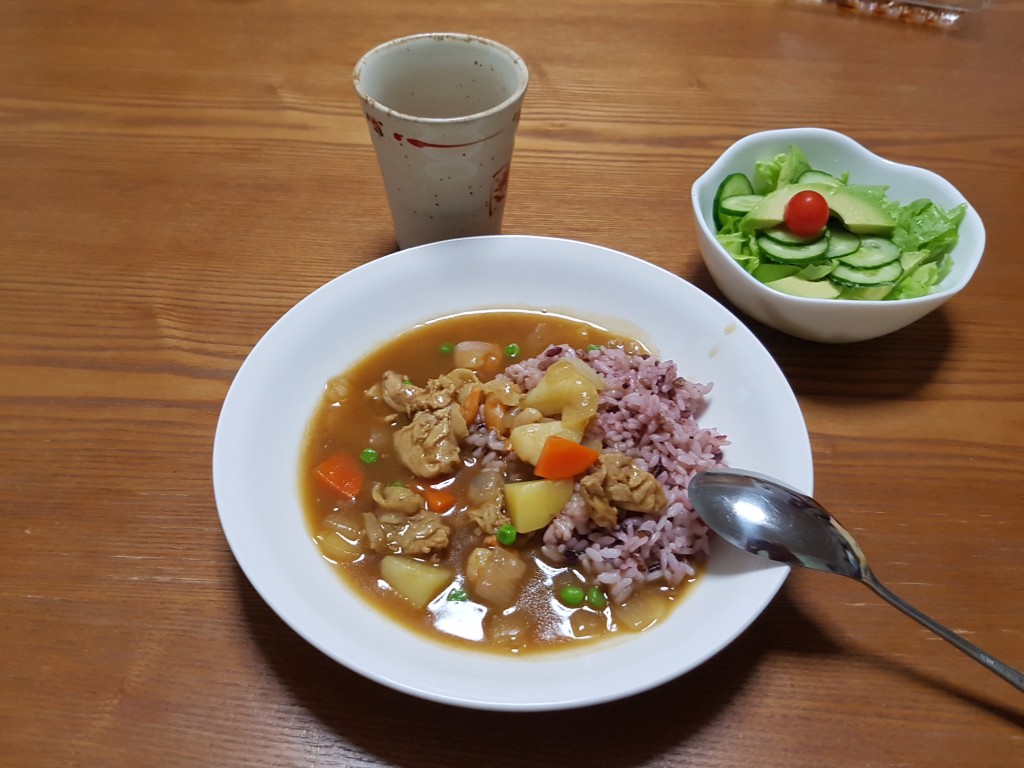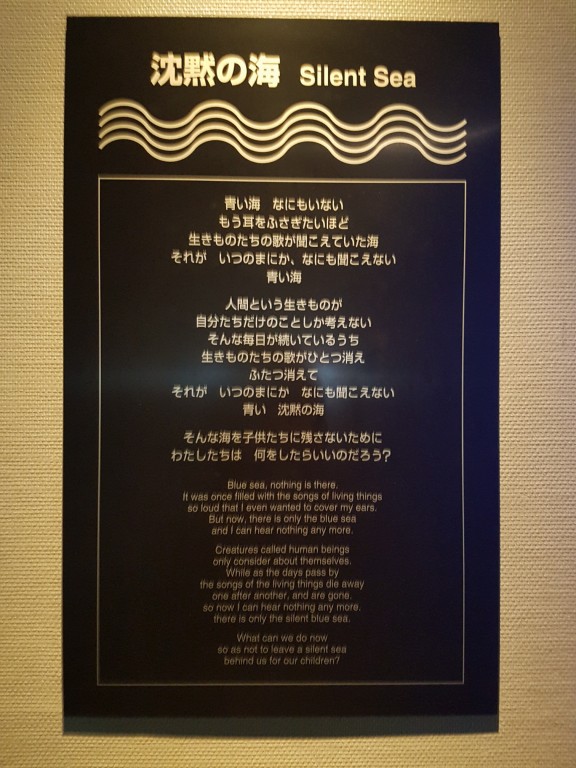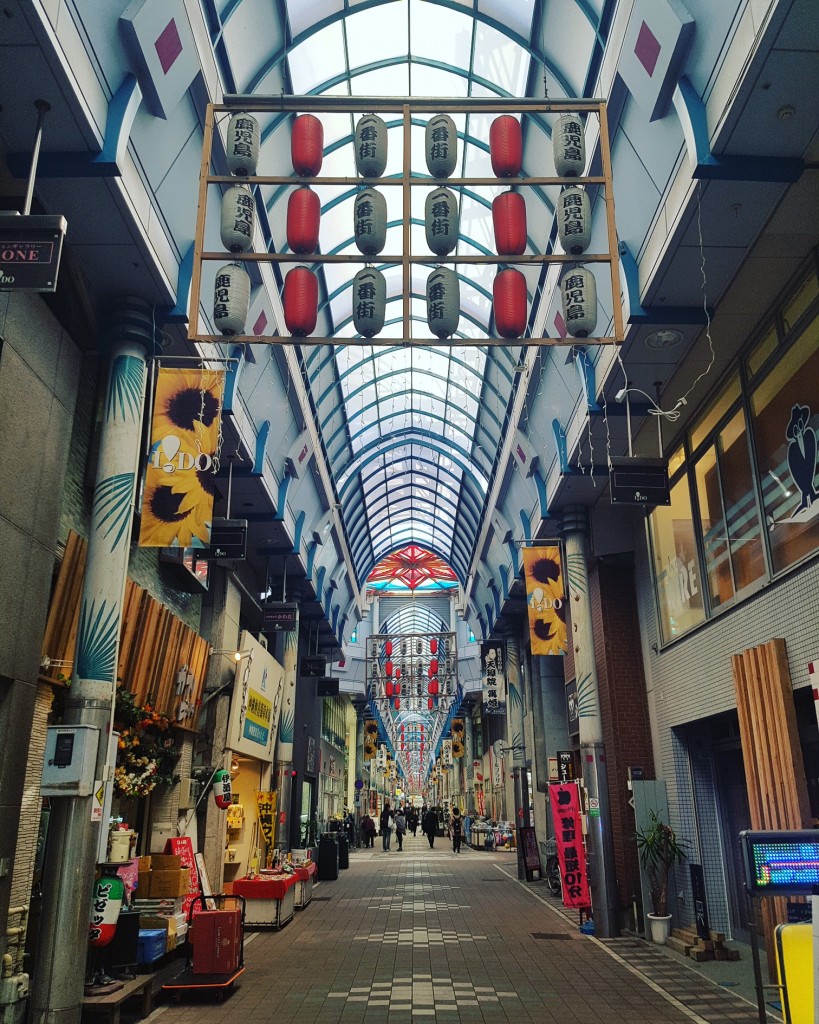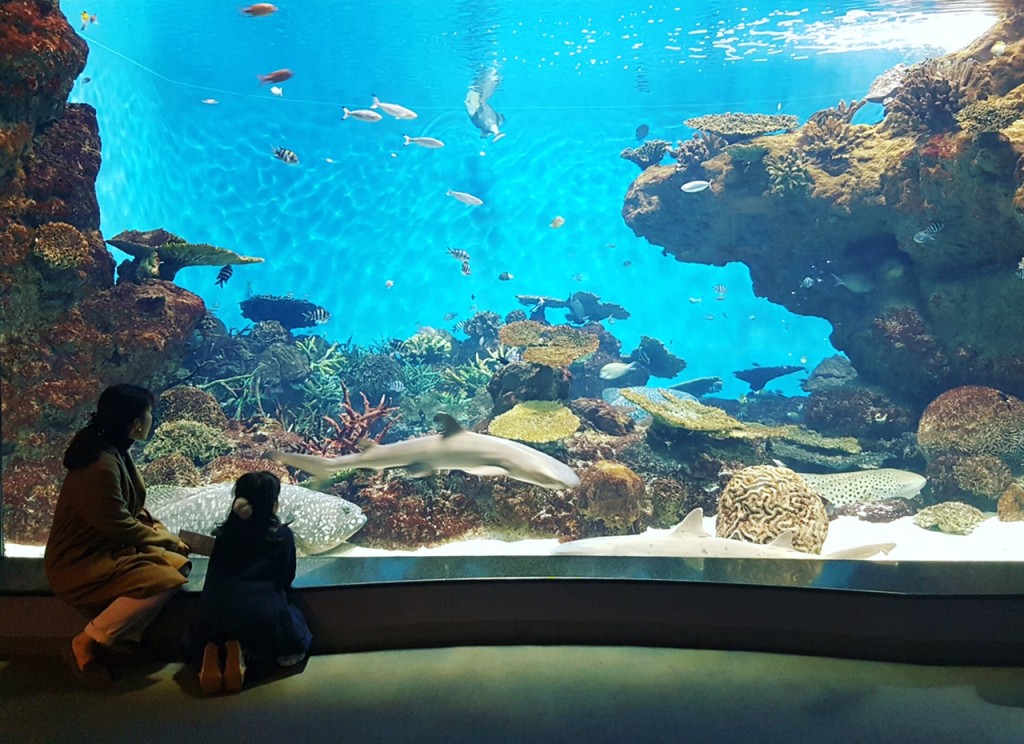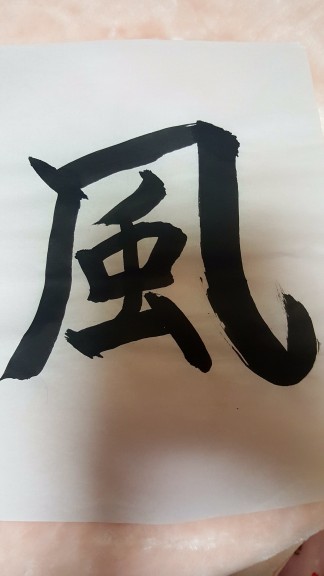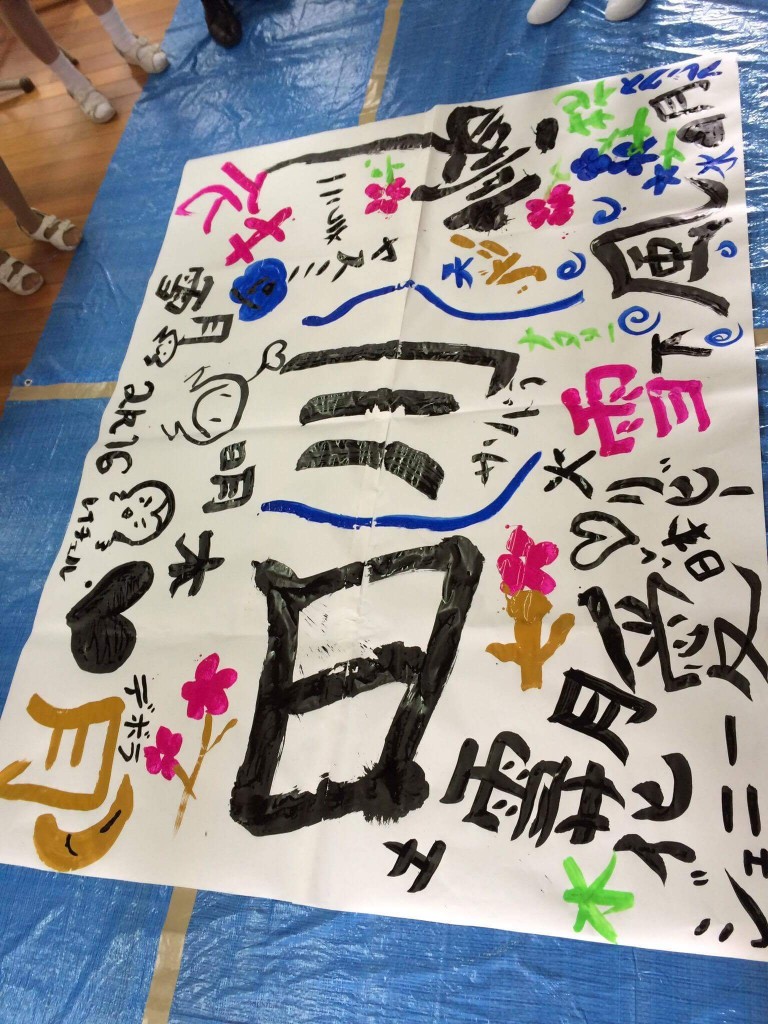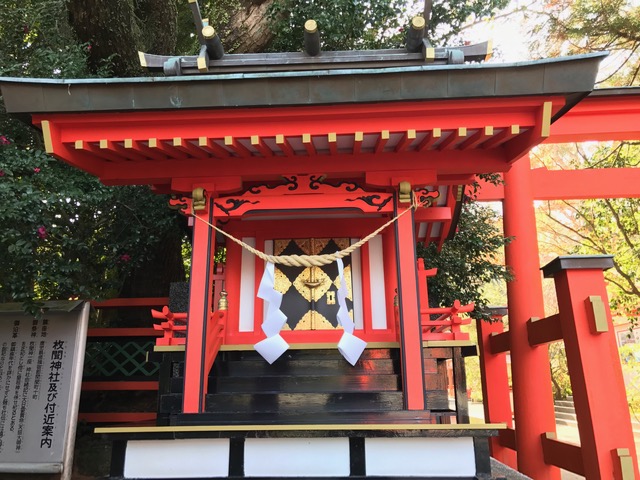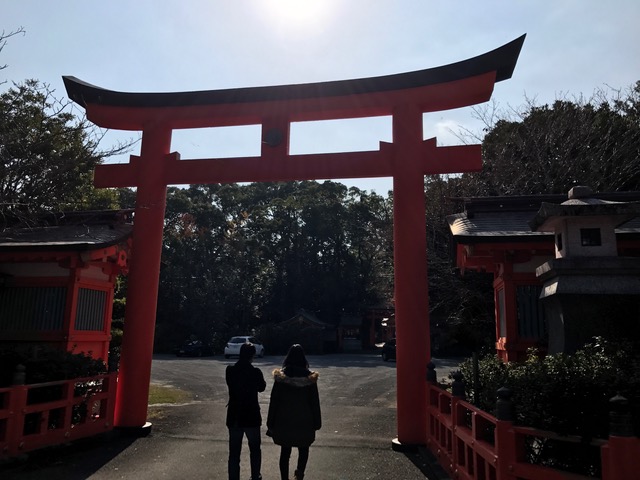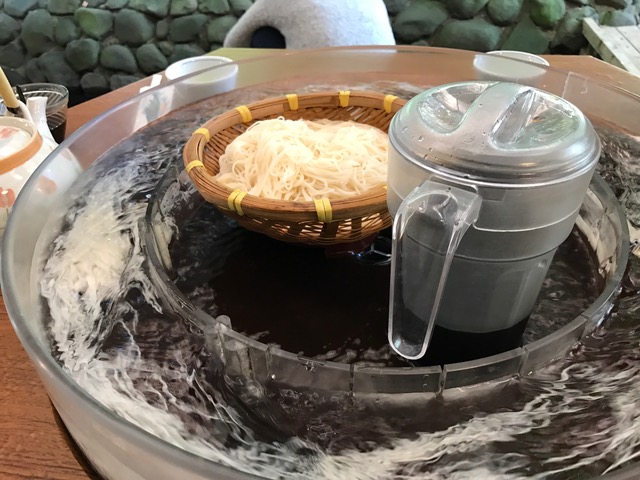On the train ride (although it was very bumpy), I’m noticed that a lot of the passengers would rest and fall asleep but knew when to wake up in time for their stop. I also noticed that it is common courtesy to avoid phone calls on the train as a sign of respect for other passengers. After climbing up the treacherous hill in order to access the school, we walked onto the fifth floor to the library where I sat and waited for Misato to sit her exam after wishing her “ganbatte” which means “good luck”. Once she finished, Misato, our friend Natsumi and I went into Kagoshima City to shop and eat Okinomoyaki which was also delicious!
After settling in and spending time bonding with my host family over the weekend through going to Kagoshima shrine and Kagoshima City’s Modern Literature Museum, I ventured into the Immaculate Heart College school grounds and properly began the study tour. Because it takes an hour to get to school, on Monday I found myself having to wake up at 6am and be ready to leave by 6.55. I found it extremely interesting that school hours in Japan are a lot longer than in Australia; almost most days my host sister has classes from 9 in the morning to 6 sometimes 7 at night.
Day 5
Today was our last day with our host families. Many of us went to different places such as the aquarium or a cat cafe. However my host family and I went to Ibusuki, which is a city in the south of Japan. On our way to Ibusuki, we stopped at various places to enjoy the scenery and take in the pleasures Japan had to offer.
Our first stop was to a famous somen (noodle) restaurant. When first entering into the restaurant, I thought we were going for a hike somewhere near a river. However, covered in surrounding green, a secluded restaurant with a small river waterfall appeared. My host family told me that the restaurant was famous for their floating noodles, koi and ayu (fish). This made me appreciate the way Japanese people incorporated nature positively in order to create a tranquil and inclusive atmosphere. It also made me question, Australia’s lack of stewardship and sustainability for the environment.
Next, we arrived at a temple near Ibusuki. At the temple, I was able to see the respect and faith communicated by my host family.
Finally after arriving at Ibusuki we went to the bath house. Ibusuki a famous city in Japan, is recognised for its natural sand bath known as ‘Sunamushi onsen’. Not only is it the only natural sand bath in the world but it is also highly acclaimed for the natural benefits the sand provides through the hot spring water from the beach. My host family and I all went to the onsen to experience the steaming sand for the first time. At first, I was nervous to be buried in sand as well as the idea of having to walk around naked publicly. Although, after accepting the nature of the opportunity, I thoroughly enjoyed myself and made use of the time for relaxation. The public bath houses in Japan gave me great insight into how different the culture of Japan and Australia are.
The idea of parting with my host family makes me feel very emotional and sad. I have shared so many great memories with them and have created an inseparable bond with each individual. This experience has not only shaped my perception of Japanese culture but also the people of this diverse nation. The other girls would also agree with me, that this experience will always be with us forever.
Day 6
Today we were fortunate to visit Ms Kusumoto’s old school and have their students be our guide of the day. We traveled to Fukuyama via the bullet train and was warmly welcomed when we arrived at the school. They kindly provided us with indoor shoes and then kindly guided us to the food technology rooms where we were put in groups of threes or twos to make Japanese cuisine. It consisted of: egg rolls (たまご焼き), Sumashiguru soup ( すまし汁) and takigomigohan rice (炊き込みご飯) that was kindly made by the students beforehand. I was fortunate enough to become good friends with one of my group members Marie and many of the other students became close throughout our stay.
After that, we were escorted to the lecture theatre to hear presentations regarding their school life and Sandra and Alex talked on our behalf regarding our school activities and the role of Saint Dominic for us Santa students. It was an extremely entertaining presentation the students put on as they recorded a student’s daily life which allowed us to realise the differences between our culture and schools in general. Sandra and Alex showcased their fluent Japanese throughout their speech whilst introducing our school to the students which allowed them to further understand the content that was being said. Melanie and I was fortunate enough to be able to accept the gifts the school gave us on behalf of our school which was a privilege on our behalf. Soon after that Yasmin gave a thank you speech which summarised our wonderful experience and our gratitude towards the warm welcoming from the students/ staff of the school.
Unfortunately our stay was short but it a sweet experience which allowed us to learn about the Japanese high school culture whilst allowing us to create new life long friendships. We were extremely grateful for the wonderful experience at (insert high school) and were sad to say goodbye to the wonderful and kind students.
Day 7
Today was our last day with our host family. I woke up at 6 am and had breakfast at 7:30am. We had our conversations at the table for the very last time. It was quite saddening to leave after such a short time since relationships have nurtured in the past week, it was too early let go. We arrived at Kagoshima-Chuo Station around 8:45am. We reunited with my fellow friends and their host families and took last minute and told unsaid things, last minute goodbyes.
My host family in particular, were so kind to me, their house was a safe haven and I really enjoyed my time in Kagoshima because of them.
At the beginning I had doubts about Kagoshima and if it was going to be fun but that quickly changed after I realized its true beauty and value, with the help of my host family.
We left them and our friends from the college there to see us off. We took the Shinkansen to Hiroshima, our next adventure.
The Shinkansen is a bullet train that easily can transport people to different cities quickly. Unfortunately for me and few others, the Obento that we bought did not taste as nice. Other than that, the Shinkansen really to its purpose and quickly got us to Hiroshima where we then visited a few famous sightseeing places.
But before all that sightseeing, we stopped by our hotel and dropped off our luggage. We then took a 20 min tram ride to Hiroshima Peace Park and saw the Atomic Bomb ruins, the Peace Park and the museum. The atomic bomb ruins really struck me with the thought, “Wow, we are really are here.” It was confronting yet a really important experience. We then walked ahead and over a bridge to encounter some uni students giving out hot tea and snacks to preach the importance and value of peace. We were asked to write down what peace was to us and I wrote understanding. To understand is to coexist and to coexist is to have peace within all of us. We then went to the Hiroshima Peace Park with the big statue of Sadako and the many thousands of paper cranes. We hang up our cranes and took photos. A primary school also did the same, but had a ceremony while singing their school song, which we carefully observed. The recurring motif of peace is everywhere in Hiroshima, the school students were preaching that. The teachers told us about peace and how all over Hiroshima it is taught and emphasized so the events like the atomic bombing will never happen again. We then went to the Hiroshima Bombing Museum. The museum, I would have to say was the most confronting and saddening of today. We saw the the bits and pieces of the bombing, really depressing information. We learnt about people’s lives and their experiences during the bombing, dead or alive. This was one of the most unique and sad yet informative and important experiences in our life.
After the museum we went to catch dinner. (Do I mention karaoke, sir?) We later checked in to our hotel and retired to bed.
Day 8
Today was the second day in Hiroshima. I woke up at 6am again today. We had breakfast in the hotel. There was both western and Japanese styled breakfast. I chose western today and had a lot of potato wedges.
We took a train to the ferry port and took a 10 minute ferry ride to the famous shrine Itsukushima Shrine and Miyajima. When we arrived there were many tourists and school students visiting so it was more busier than expected. It was my turn to inform the group about Miyajima and the shrine so I had researched the night before and created notes. We encountered many deers, some very tame but most very hungry. The deers sometimes bit our brochures or paper off our hands and were constantly chasing us to find food. It was actually quite amusing. We then followed the path from the port and to the shrine where we took MANY photos. It was so beautiful and surreal. I had researched this beforehand and had literally drooled on the photos but to see it in real life, it really made all the walking worth it! We then left after having udon and ice cream, took the ferry back. We spent most of the day at the shrine and then we went back to the hotel to calm down. One of our group members felt sick so we stayed put in the hotel until early evening. We went to a busy place with shops and stuff to eat little things here and there. It was busy but really cool. We had a Tonkatsu dinner which was excellent because it was so crunchy and juicy, it was great! After dinner we took the tram back to the hotel to sleep and wash up and do diary entries.
Day 9
Today we traveled to kiyo mizudera. Their were many shops and even more people traveling up the hill to the main temple. When we arrived at the temple we ventured into tainai meguri where we all walked through a pitch black tunnel and the only source of light shining from the Buddhist stone at the end of the tunnel. The experience is supposed to replicate rebirth. We then proceeded to the love rocks, along the way we saw beautiful scenery and the kanji of the year KIN. When we arrived at the love rocks we all attempted to walk from one rock to the other(you will find love)
After that we went to the area where each fountain will grant either long life, health or wisdom. After kiyo mizudera we travelled to gin kakuji (silver pavilion), it was incredibly pretty. The tranquil gardens gave us a sense or peace and calm. The temple demonstrated that plain can also be beautiful
The last place we went to was fushimi nari where their were hundreds of tori gates and mini shrines. According to mrs kusumoto and mr arkell we were the first to reach the top of the hill, all 1,610 stairs and all we got was a piece of paper saying top of the hill. And although we were tired and somewhat disappointed with the lack of congratulations, the achievement of reaching the top was rewarding.


